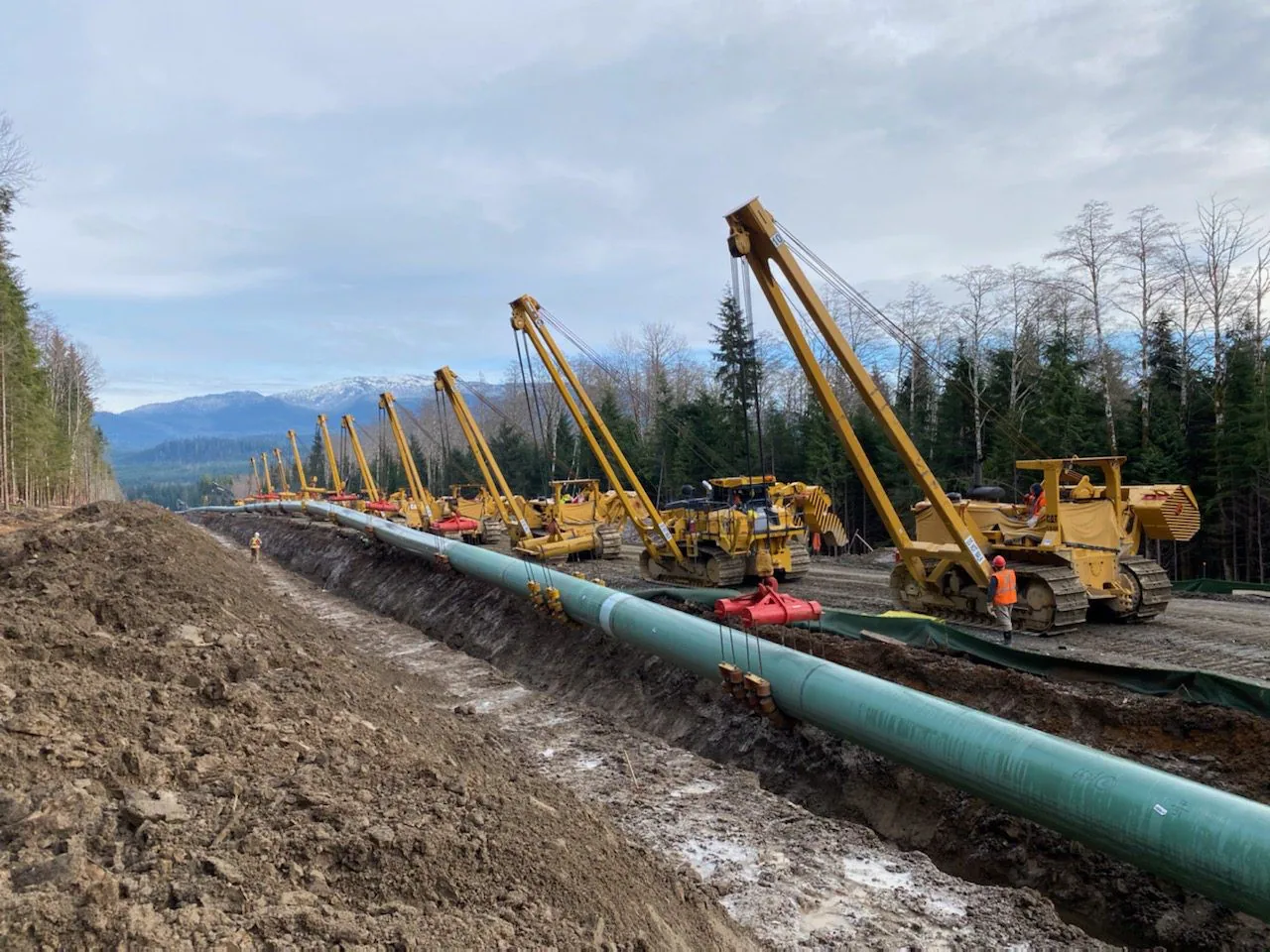TC Energy Coastal GasLink
Project Overview
- To enable export of LNG to global markets, TC Energy is constructing the Coastal GasLink Pipeline from northeastern British Columbia to the LNG Canada facility in Kitimat.
- The overall project is a 670 km, 48-inch pipeline with an initial capacity of 2-3 billion cubic feet per day with the potential for expansion.
- GeoVerra is providing construction and legal survey services for the first 140 km of the route near Chetwynd, British Columbia.





Project Background
TC Energy is constructing the Coastal GasLink pipeline to safely deliver natural gas across northern British Columbia to the LNG Canada facility in Kitimat. When complete, the Coastal GasLink pipeline will enable liquefied natural gas (LNG) to be shipped to global markets to replace coal-fired electricity, making it a significant project for the client, the Canadian economy and the planet.
Coastal GasLink’s approved route was selected as the best option for the environment and surrounding communities, and considered Indigenous, landowner and stakeholder input, archaeological and cultural values, land use compatibility, safety, constructability and economics. The total project is a 670 km, 48-inch pipeline with an initial capacity of 2-3 billion cubic feet per day with future expansion through additional compressor stations.
GeoVerra is providing construction and legal survey services for the first 140 km of the route near Chetwynd, British Columbia. Starting in July of 2020, the Coastal GasLink site surveys for construction are slated until the end of 2022 with ongoing survey support for clean up and legal surveys through the summer of 2023.
Why GeoVerra
With four offices located along the Coastal GasLink path and 14 crews in the area, GeoVerra was poised to provide TC Energy with fast, flexible resourcing for the project. This capacity enabled GeoVerra to double the number of crews from four to eight over the course of the project. Having previously worked on the Pacific Trail Pipeline spanning a similar route as the Coastal GasLink, GeoVerra was already familiar with the terrain, environment and stakeholders.
Having the background knowledge and capacity for the project is certainly key, but to execute and deliver high quality surveying services and documents that the client can trust takes experience and expertise combined with the right technology and processes. The GeoVerra team dedicated to the Coastal GasLink project has hundreds of years of combined experience, with over half having more than 10 years each. Each member brings specialized expertise in project management, surveying, mapping, data processing and CAD technology specific to pipeline projects.
GeoVerra’s geospatial group had ready access to the latest advanced technologies such as unmanned aerial vehicles (UAVs) coupled with laser scanning to enable efficient and accurate right-of-way (ROW) surveys. They also used bathymetric surveys to measure water bodies for engineering design, as well as to ensure volumes for pipeline hydrotesting.
To process the vast amounts of data, GeoVerra used specialized pipeline software enabling automatic checks between actual pipe tallies and the original manifest expediting the QC process. This daily processing of the data is key to GeoVerra’s ability to provide a quick and accurate turnover following completion of the project, as well as interim deliverables when requested. Additional QC was completed using ISO 9000 approved processes which included in-house developed workflows, work instructions and checklists, as well as random, company-wide project audits.
Primary Services
Construction Surveys
- Staking the ROW for clearing, stripping and ditching
- Staking ditchline, engineering features and appurtenances
- Supporting pipe stringing by tallying all pipes as they are strung onto the ROW and comparing to the manufacturer’s specifications
- Weld-mapping pipes as they are welded above ground and then recording the as-built location of the welds as the pipe is lowered into the ditch to produce a detailed final as-built showing the locations of all welds, appurtenances, bends, etc.
- Topographic surveys (primarily for crossings)
- Horizontal directional drilling (HDD) and valve site support
- Hydrotest, caliper pig run and ROW cleanup support
Legal Surveys
- Legal Survey support to comply with BC regulations to obtain a final ROW after the construction is complete.
Deliverables
- As-Built Survey: Includes positional information, pipe specifications, survey description (e.g., bend, weld, appurtenances, etc.), crossing information, and land (type, owner, use, legal location), as well as any construction notes that come from the construction contractor.
- Redline Drawings: Markup of all Issued for Construction (IFC) drawings, indicating the actual as-built information in red to compare to the engineered design information shown on the original IFC. These are prepared for IFC alignment sheets, design crossings, typical crossings, valve sites and any other plans issued by the client.
- Pipe Reconciliation: Ensures all the pipe that was planned for the project is accounted for.
- Hydrotest Sketches: Indicate each test section and the pipe included within it, allowing the engineers to calculate the volume of water needed for the testing, as well as the points of possible concern (critical high and low elevations).
- Materials List: Indicates all appurtenances and other items that have been installed on the pipeline, to ensure all appurtenances that were planned for the project are accounted for.
- Final Tie-In Sketches: Show the final welds in between test sections or at the beginning/end of the pipeline.
- Survey Control Report: Indicates any control point placed throughout the project.
- Valve Site and Facility As-builts: Completed via laser scanner to produce 3D PDFs for all facilities.
- Legal Survey Plans: Required to be registered with BC Land Titles to obtain the permanent ROW.
- Additional Documentation: Volume reports for excavation, grading plans, and maps for access, water sources etc., and KMZ files for pipe information, land information, access, etc.

Ready to Start?
As one of Canada’s largest geomatics companies, we have field offices dotted from British Columbia to Ontario so that we can deploy teams with local knowledge at the drop of a hat and scale quickly to meet project needs.